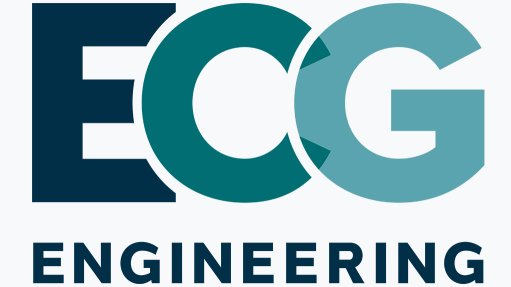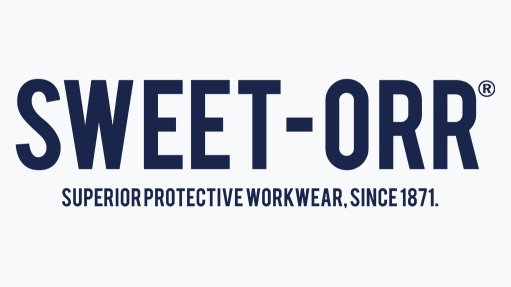Second iteration of just transition project framework completed
Nonprofit economic research institution Trade and Industrial Policy Strategies (TIPS) has developed the second iteration of its framework to identify and measure just transition projects in South Africa, and will publish it in March.
The first iteration of the framework was used to test theoretical assumptions about just transition projects against projects on the ground. It used an open call and an invitation to 70 companies known to be active in the space to gather data on projects, with the respondents drawn from a broad cross-section of industries.
The researchers then tested the information of these projects against the first framework and made adjustments based on the insights for the second iteration.
The aim is to iterate the just transition 'tag and track' framework so that it meets the needs of the complex environment while ensuring that projects that have a beneficial impact on the just transition are recognised, said TIPS research fellow Sandy Lowitt.
"South Africa needs to develop a practical tool to identify what counts as a just transition investment in a South African context. One of the aims of the framework was to provide a method to support iterative, evidence-based learning-by-doing, which will facilitate investment flows while building consensus in this highly complex area," she explained.
The TIPS team aims to create concrete feedback loops so that future iterations become better over time, given the complexity of the topic.
"This will be a long-term journey, in terms of getting definitions, parameters and measurements right," Lowitt said.
"TIPS is doing lots of research on financing needs for just transition projects, and people in the financial sector and from projects on the ground often ask us what counts as a just transition project, and whether their projects would be eligible for superior financial terms or conditions," she noted.
The just transition 'tag and track' research project also attracted interest from private sector non-financial corporates, specifically mining houses, big chemical companies and food processing companies, she highlighted.
Additionally, local and foreign development finance institutions were also active in this space, State-owned enterprises also had several projects to contribute, and several private sector developers submitted projects, she added.
The researchers found that just transition projects in South Africa were divided into two broad categories, namely green projects and socioeconomic improvement projects.
For green objectives and activities, the existing green taxonomy was used. However, for socioeconomic objectives and activities, there is no agreed-upon taxonomy.
TIPS, therefore, looked at different socioeconomic needs assessment reports and developed four high-level objectives that projects need to meet to be considered part of a just transition.
The first is to support employment and livelihood opportunities, the second is to improve access to services, the third is to support the strengthening and developing of existing and new supply chains, and the fourth is to improve community spaces, organisations and services.
"So far, these objectives seem to have been well received, but we need to keep on developing and drilling down and making the objectives crisper, with better definitions and parameters as we move forward," she said.
The codification undertaken by the framework provides solid parameters and guidance to project champions on what counted as a just transition project and what did not, Lowitt said.
Also, for those using the framework, it provided consistency and comparability across projects, she added.
The first iteration of the framework determined a failure rate of 82% for projects. Part of the problem was that companies failed in terms of the community and labour engagement requirements, even though there were no identifiable communities to engage.
"Unlike international just transition projects, not all South African projects are place-based and, therefore, it was not that the projects [that were excluded] did not want to engage, but that there was no appropriate community for them to engage with," she noted.
A further reason given by companies was that, with projects in their very early stages, the companies did not want to create unrealistic expectations in the community before it had been determined whether the project was technically viable or not and they would engage when it was technically viable, Lowitt said.
The first iteration of the framework also excluded enabling projects, which were policy support, municipal capacity building and regulatory amendment projects, she highlighted.
Similarly, some projects were disqualified under the first framework because they did not have funding, but were being done using in-house units with non-project-specific budgets, projects that used sweat equity investments, and projects that were in pilot or testing phases.
Therefore, TIPS developed the second iteration of the just transition 'tag and track' framework.
"The problem is not in the prescreening criteria and evaluation criteria. The problem is in asking projects to meet criteria that are not applicable to them. Therefore, our framework was too rigid and cannot embrace the heterogeneity of projects that we are seeing on the ground," Lowitt said.
TIPS kept the fixed list of criteria, but with discretionary application of those criteria to different types of projects.
In the second iteration, based on the evidence TIPS collected, all projects will fall into one of eight categories of projects. The project champion must decide whether the project is place-based or not, and then decide on the characteristic of their project, namely whether it is an enabling project or a tangible project.
If a tangible project, the champion must then determine whether the project is at the proof of concept, project preparation or implementation stage.
"This will give each project an alpha-numeric code, such as a place-based tangible project at the proof of concept stage would be a 1B.1 type of project.
"That type of project will attract a specific set of framework criteria, which will be different from the criteria for the other seven project types," she said.
"Each project will have a set of criteria that are matched to the characteristics of your project, whether place-based or not and where it is in its life cycle."
When the projects were evaluated according to the second iteration of the framework, the pass rate went up to 71% and TIPS researchers felt that they had a better collection of projects that mirrored more closely what South Africa needed in terms of its just transition, Lowitt said.
The second iteration also included the technology testing and pilot projects, which are important, as well as including enabling projects.
"However, we are unsure whether we want enabling projects in this framework. We will collect further information for the next iteration.
"We know we need enabling projects in South Africa, because we have lots of bottlenecks and capacity-building challenges in developing a just transition pipeline, be they regulatory, policy or capacity challenges at the municipal or local level.
"But, we also know that there is a risk that this can create a consulting bubble if the framework allows enabling projects, as it can allow consultants to come in and write lots of reports and do lots of research that can divert money from on-the-ground projects that will help people negatively impacted by the transition."
The third iteration of the framework is set to be completed in two to three years, and the researchers had acknowledged that there was lots of work to be done on parameters, definitions, and fine-tuning objectives and qualifying activities, she said.
Article Enquiry
Email Article
Save Article
Feedback
To advertise email advertising@creamermedia.co.za or click here
Press Office
Announcements
What's On
Subscribe to improve your user experience...
Option 1 (equivalent of R125 a month):
Receive a weekly copy of Creamer Media's Engineering News & Mining Weekly magazine
(print copy for those in South Africa and e-magazine for those outside of South Africa)
Receive daily email newsletters
Access to full search results
Access archive of magazine back copies
Access to Projects in Progress
Access to ONE Research Report of your choice in PDF format
Option 2 (equivalent of R375 a month):
All benefits from Option 1
PLUS
Access to Creamer Media's Research Channel Africa for ALL Research Reports, in PDF format, on various industrial and mining sectors
including Electricity; Water; Energy Transition; Hydrogen; Roads, Rail and Ports; Coal; Gold; Platinum; Battery Metals; etc.
Already a subscriber?
Forgotten your password?
Receive weekly copy of Creamer Media's Engineering News & Mining Weekly magazine (print copy for those in South Africa and e-magazine for those outside of South Africa)
➕
Recieve daily email newsletters
➕
Access to full search results
➕
Access archive of magazine back copies
➕
Access to Projects in Progress
➕
Access to ONE Research Report of your choice in PDF format
RESEARCH CHANNEL AFRICA
R4500 (equivalent of R375 a month)
SUBSCRIBEAll benefits from Option 1
➕
Access to Creamer Media's Research Channel Africa for ALL Research Reports on various industrial and mining sectors, in PDF format, including on:
Electricity
➕
Water
➕
Energy Transition
➕
Hydrogen
➕
Roads, Rail and Ports
➕
Coal
➕
Gold
➕
Platinum
➕
Battery Metals
➕
etc.
Receive all benefits from Option 1 or Option 2 delivered to numerous people at your company
➕
Multiple User names and Passwords for simultaneous log-ins
➕
Intranet integration access to all in your organisation

















